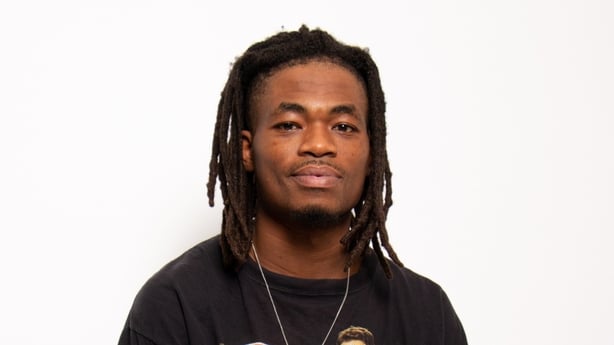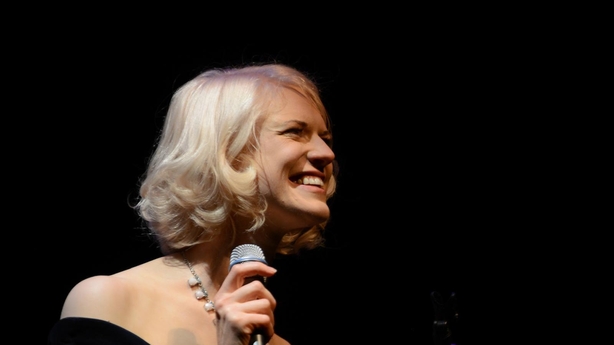Many workers in the arts and creative sectors in Ireland are leaving the industry due to harmful behaviours they have experienced, a recent report has found.
Artists with a disability, from the LGBTQ+ community or a member of an ethnic minority, report experiencing discrimination, exclusion and micro-aggression while working in the arts sector in Ireland.
A recent report, entitled Amplify, engaged with 500 artists from the fields of the visual arts, theatre, film, music, literature and more through a mix of surveys, focus groups and one-on-one interviews.
Lead researcher of the report Dr Ciara L Murphy said it shows that discrimination, including ableism, homophobia, racism and transphobia against identity groups is a "pervasive and persistent reality for those and working in the arts and creative sectors".
Artists from minority backgrounds experiencing discrimination "where there's violence or really serious incidences; that is unfortunately common," Dr Murphy said.
"But what is much more common is this pervasive and persistent undermining and discrimination in the workplace."
Inaccessible venues and micro-aggressions
Saoirse Smith is a comedian with cerebral palsy and is also a wheelchair user. "There's very few of us in the comedy circuit unfortunately," she said.
This is partly due to the fact that comedy venues are often in the basement or top floors of pubs that are inaccessible for wheelchair users.
Ms Smith has made her way to gigs in certain venues by getting out of her chair and using her bum to navigate the stairs, "which is very degrading and demeaning," she explained.
"People try to walk past me as I'm trying to crawl upstairs. [Other] people just stare. Because I have to take my time, it's quite embarrassing."

Nearly two-thirds (63%) of disabled artists reported experiencing micro-aggressions.
Dr Murphy explains micro-aggressions as "a negative joke, or an assumption based on someone's identity or a comment or non-inclusive language".
"If you're experiencing that daily in your workplace situation and it's something that weighs on you and means you have to be on guard all of the time and to try and confront it, it stymies your progress and development as an artist in those settings," she said.
Ms Smith recalled an incident near the beginning of her comedy career.
"I remember the promoter introducing me and I just happened to wheel in from off the stage. They were clapping and then once they saw the wheelchair they stopped. Mid-clap."
Another time someone tried to sit on her while she was performing on stage.
"I kind of freeze. I've had people try to come up and touch me and grab me when I'm on stage and I get quite scared. As a woman I don't like people doing that.
"I'm very fortunate that I have people in the community, they protect me."
She added that she wishes people would ask her if she'd like their help and accept the answer.
"Don't be rude. Don't think it's ok to sit on me. And just because I make fun of myself doesn't mean that you can invade my space."
Workplace exclusion
Of the disabled respondents in the Amplify research, 56% said they had been excluded from their workplace due to a lack of care or ableist attitudes to their disability.
The Amplify report also found that negative perceptions of an artist due to their minority status led to them missing work opportunities. This was true for nearly three-quarter (74%) of disabled respondents.
Tobi Balogun is a dancer and choreographer. He is also black and living with the invisible disability of chronic pain.
"Whether it's disability or race, there are little daily things that come up," Mr Balogun said.
Mr Balogun added he doesn't feel space has been made in conversations around work for the challenges and experiences of people like him: non-white and not able-bodied.

"I took a break from theatre for a while because trying to be a black, disabled artist ...trying to be seen as valid in that space has been a particular challenge."
He added there was often no scope to adapt dance routines for people with a disability.
"[You're expected] to take on anything the choreographer throws at you but that often entails no actual consideration for the physicality of the person in the room."
'Unconscious exclusion'
51% of artists from a racially and ethnically minoritised background reported experiencing micro-aggressions and 40% said they had experienced racial discrimination in their workplaces.
For artists who are members of LGBTQ+ community, 43% of them had experienced a micro-aggression related to their queer identity
"A lot of micro-aggressions come out of just unconscious exclusion," explained Emilie Conway, a jazz singer who is visually impaired.
"Those things, over time, when people should know better, feel aggressive."
Ms Conway said music is an area of her life where she feels she can "compete" with non-disabled people.
One of the barriers for her is that artistic work like this, by its nature, is often freelance and sporadic.
"To sustain a career in the arts, you need to be not only competitively talented, but competitively healthy," she said.
She explained that refusing work when she doesn't have the health for it can lead to a fear that she won't be offered work again.

Reputation fears
Ms Conway also said that there needs to be a safe way to report micro-aggressions from bookers of artists in the industry.
"Frequently people are very afraid to report it in case that means they don't get asked for work again."
The fear of reputation damage for raising issues at work made artists from minority backgrounds afraid to do so.
This was true for 60% of disabled respondents; 55% of racially and ethnically minoritised respondents; and 45% of LGBTQ+ respondents.
A lack of awareness in the arts sector from those who are not from a minoritised background also means that the burden of improving conditions fell to those workers who were already being impacted by systemic issues, according to the report.
A significant number of the artists that Dr Murphy spoke to for her research have since left the arts sector.
"They just couldn't keep going in terms of the conditions they had," she said.
"This isn't all the fault of outright discrimination and micro-aggression but also systemic issues including the housing crisis and access to welfare payments and disability funding.
The invisible barriers in place for minorities in the arts sector have been discussed for a long time, according to Dr Murphy.
"The burden of labour being done to improve conditions for minorities, artists and arts workers is falling on the artists and arts workers themselves," she said.
"Whereas across all categories, it's clear that the power to enact meaningful changes in the hands of employers and organisations.
"We need a top-down approach to improve the lives of people who are experiencing discrimination."







